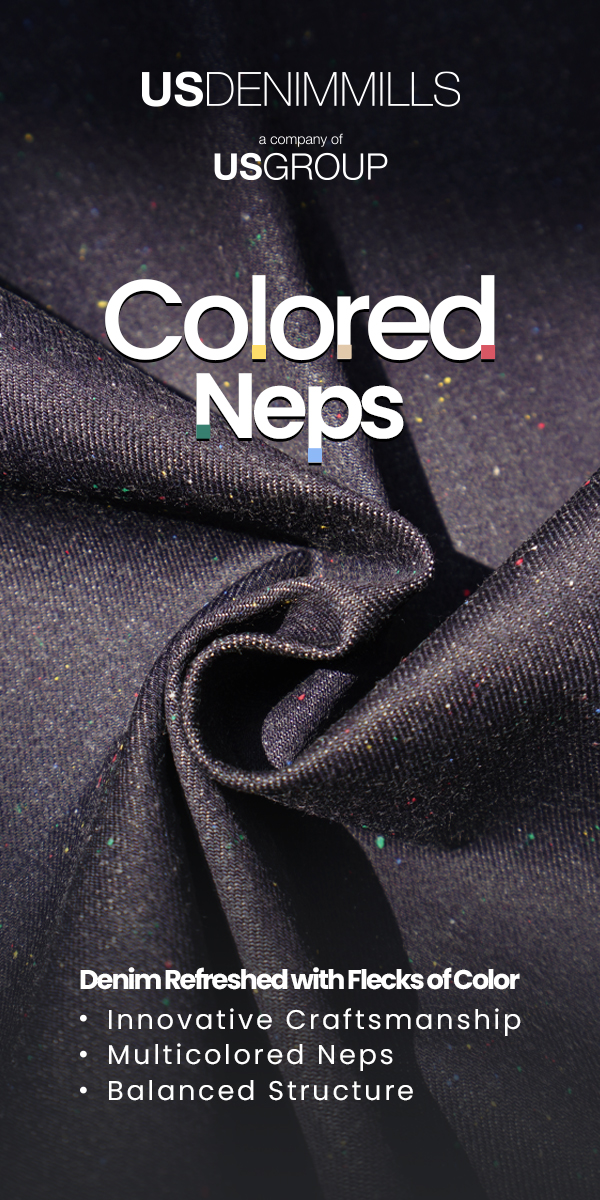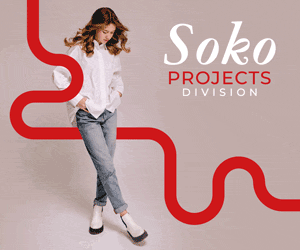How trendsetting changed camps

There was a time when designers and product developers would, logically and systematically, bring in fresh ideas for trends and fabrics that denim mills and factories would then strive to develop. Those times are (mostly) no more. Today, denim mills and factories are the instigators of trends. Tilmann Wröbel breaks down the process that has led to this inversion in trend defining denims.
One day in the early 2000s, I found myself sitting next to Gianluigi Candiani in a shuttle bus at a fabric trade show. He told me that for over 30 years his family had manufactured and presented two types of denim fabrics, a light and a heavy weight. Those days are long gone. As are those, in the 1960s, when American and Japanese denim brands would request laundries to beat their denim products with golf balls and all sorts of improbable objects to obtain worn down effects.
In the early 1990s, before specific denim fabric fairs came to be, we, the designers, would head to the Paris fabric show, seeking similar looks to source or develop for our own clients. We’d share our ideas, like the time when we were hunting with Pierre Morrisey for a denim fabric with a special coating, which Pierre would then turn into G-Star’s Kinetic denim, a trend that launched a whole new aesthetic. No mills had investigated this field yet, but we did find open-minded mill and laundry technicians happy to develop whatever effect even the smallest of our brands was looking for. These mills and laundries had the skills, the equipment, and the readiness to dedicate time to test new concepts.
A changing of the guard
This situation has changed drastically. With the exception of a small coterie of major denim brands and high luxury labels, few designers and product developers suggest creative ideas for fabrics and finishes, preferring to choose from the products mills have developed on their own.
Is this because fashion has become so fast? Is it because subconsciously we expect expertise and technology to be automatically integrated into the products we buy? Whatever the case, most designers only accept to source a denim fabric or wash that has been fully vetted by the mill and that presents no risk for the buyer.
Tim Huesemann, Panther Denim’s director, confirms this shift: “15 to 20 years ago, our clients always supplied detailed fabric information. 12 years ago, we started presenting our own ‘feelings’, to offer something new. As a vertical mill, we kept an eye on denim trends in Tokyo, Shanghai and Hong Kong as much as in Europe and the USA.” Now Panther develops collections that address trends it has identified, such as DenimElegance, to meet demand for dressy silky denims; Downtown, a range which has a chic Paris edge; or Botanic Chic, a mix of fluidity and softness. Its fabrics are made from Lenzing’s Tencel, Indigo Modal, Tencel Matte or Ecovero.
Famous for his trend-relevant, opulent and clever fabric developments, Paolo Gnutti, at Isko Luxury, is well aware of the new paradigm: “In today’s crisis, brands should innovate and take risks, as they did in the past. My collections focus on versatile, seasonless and gender-neutral denims that can be worn in Los Angeles, Tokyo or Oslo. Luxury, for me, means accessible designs that enhance individuality and comfort. Fashion should make you feel special, not just another number.” He thus describes, in diplomatic terms, the current design state-of-mind of brands and how it has led to the often uninspired and uninspiring fabrics that are on offer.
Meanwhile, denim trends for youth are focussing on bold jacquard weaves, as seen in the super-size jacquard looms that mills such as Raymond-Uco have recently acquired. They also favour unusual twill weaves that are looser or made with super thick yarns, crazy dirty casts or powerful colour overdyes. Not to mention the top-of-the-top trend of digitally-printed denims, seen at Prosperity’s Stella Blu, which has the potential to expand the denim prism as an art form or simply as a more sustainable solution.
Balancing act
The market context may also be a guilty party here. Fact is, today more than ever, denim mills need to optimise their operations and time spent in R&D. Every cent counts, and every lost minute is a cent lost. Designers may well dream of a more creative future, and mills must balance demand for trend-relevant denims with their resources, to provide cost-competitive products.
Some point out that sustainability has become as important as style trends. “Comfort is a key feature today. As is timelessness, in a ‘less is more’ approach, so that garments can be worn for years. To achieve this, a fabric needs to perform and have a timeless aesthetic,” says Dilek Erik, marketing director for Sharabati.
The dichotomy between sustainability and trend-relevance is particularly manifest at Candiani. Under the direction of Alberto Candiani, Gianluigi’s son, the Italian mill has evolved from being a supplier of “trend-overload” denims, in the early 2000s, to a specialist in finely tuned mechanics combining style, trends and sustainability. “We envision denims that are both regenerated and regenerative. By taking into account a product’s end-of-life, Alberto has learned to engineer fabrics that anticipate the trends that shape the premium and luxury market. It is a creative kitchen that cooks up new style directions without forgetting to keep it clean,” says Candiani marketing director Simon Guiliani.
Driven by sustainability or by trends?
While I respect a mill’s right to keep its new developments under wraps, as does Candiani, it seems that our industry has embraced sustainability to such a level that it now tends to overshadow trends in weaves, casts, finishes and makes.
On the topic of trends and sustainability, denim guru Piero Turk observes that “we are finally, after years of considering cotton as evil, accepting that cotton is denim, and denim is cotton. I see that simplicity is more and more appreciated, and, for me, simplicity is the new luxury. It is good to see fewer ‘useless’ denim developments that ultimately go to waste. There is also a new view on recycling: how much energy is used to recycle fibres? What are the CO2 emissions of shipping tonnes of garments around the world for recycling? Is that sustainable?”
Obviously, trends in sustainability and in style are not the same. They may influence one another, but they can in no way replace one another. Trends happen. Freshness in style and design are necessary. Today however they are interpreted by talented designers working for denim mills, factories and laundries. Then presented to buyers for brands or retailers. And as I like to say: sustainability is a must have, not a trend. Free your denim mind!
Denim mills need to address demand from brands and retailers for low-impact processes and materials while staying on-trend, a fine line that Sharabati treads with talent.
Photo: Sharabati













